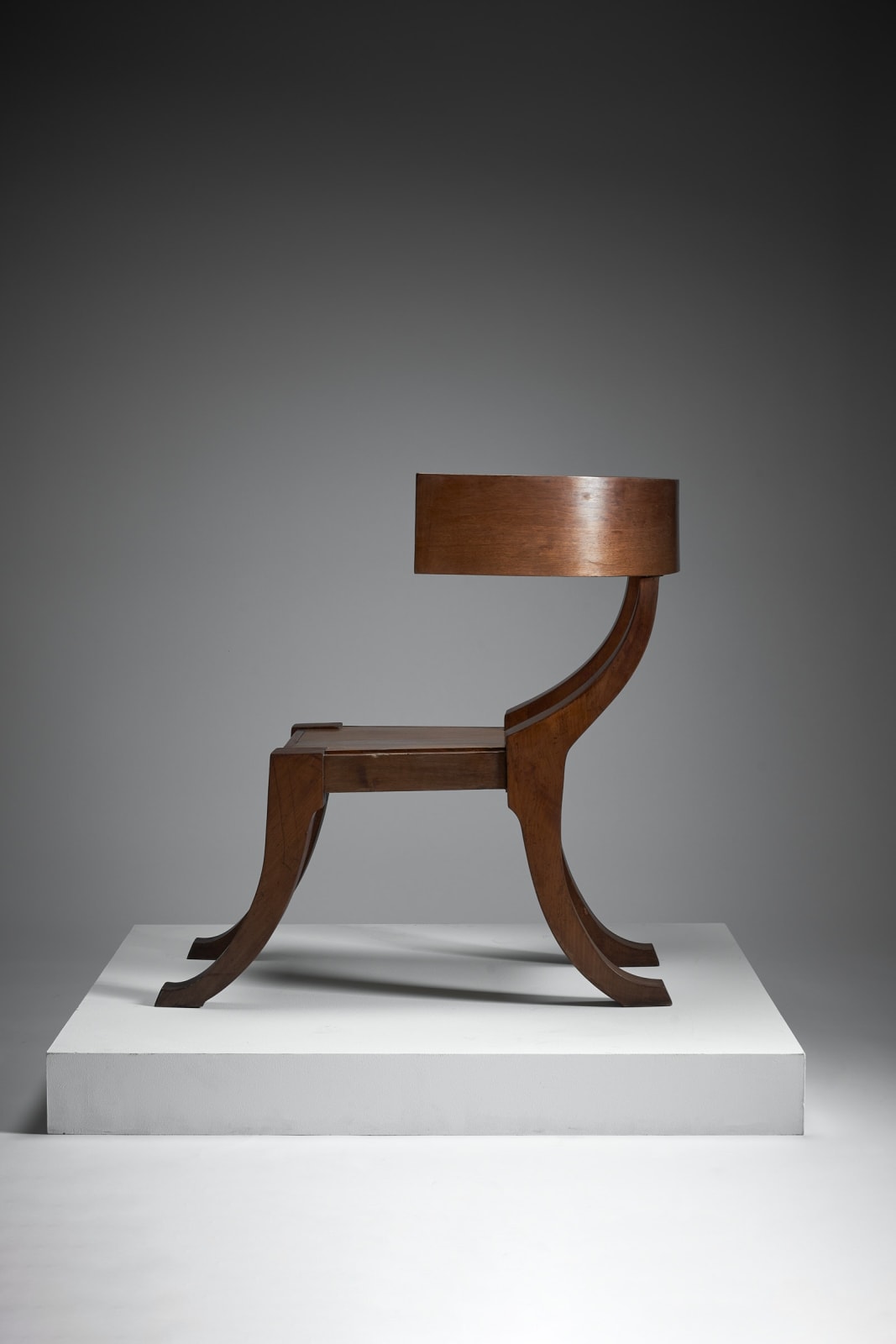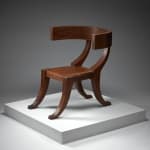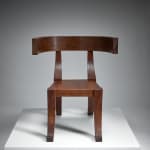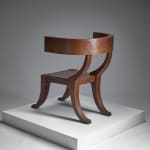Duilio Cambelotti (Rome, 1876 - 1960)
Further images
Duilio Cambellotti was an Italian craftsman, illustrator, painter, sculptor and designer who played an important role in the Italian Arts & Crafts and Art Nouveau movement. He is recognized for his versatility in a spectrum of visual and design disciplines and for his fidelity to agrarian themes.
Cambelotti was born in Rome. He earned a degree in accounting, but shortly after he enrolled in an arts and crafts course at the Industrial Artistic Museum in Rome, where he learned metal engraving. He also traveled to Naples, Athens and Istanbul to learn. He was a supporter of the ideas of William Morris, and like Morris, he believed in the need to restore craftsmanship and quality to fine art, ornamentation and design. Cambellotti was also attracted to the visual vocabulary of Art Nouveau. He created illustrations in that style for magazines, books and newspapers and his furniture design (he was known for "Cambellotti lamps" and tables) is considered emblematic of Art Nouveau concepts. His gifts were recognized and his illustrations of "Dante's Divine Comedy" won the "Alinari Prize" in 1901 while he was still in his twenties. A few years later he discovered theatrical production and set designs, in that field too he quickly established a name for himself. Another medium that suited his sensibilities and talent was stained glass, from 1910 into the 1920s he exhibited remarkable stained glass works in addition to being one of the organizers of the shows themselves.
Throughout his career he was aware of the social significance of decoration, being influenced by William Morris, he became a leading figure among artists who sought intellectually and aesthetically to maintain a connection with the organic immediacy of style found in traditional handmade objects and in traditional pictorial coherence, as opposed to the smooth surfaces and machine-like images inspired by the Industrial Age. Cambellotti greatly admired the theories of "rational beauty" of Henry van de Velde, one of the founders of Art Nouveau in Belgium, but at the same time the Italian artist remained faithful to agricultural motifs and to a non-anthropotechnical, undisturbed relationship with natural forms. The most common motif in his works is a corn cob. He is considered, along with Vittorio Grassi (1878-1958), one of the main proponents of the Scuola Romana (as a branch of Art Nouveau) and he steadfastly glorified the "heroic atmosphere" of peasant culture over the decadence of the cities.
Duilio Cambellotti died in Rome on January 31, 1960.
Duilio Cambellotti's life spanned revolutions introduced by the Industrial Age and automation, accompanied by the rise of modern aesthetics, the rise and fall of fascism in Italy, and more; all these changes are reflected in one way or another throughout his oeuvre. Cambellotti was interested in his native Rome, not only through the agricultural world that supported it from the beginning, but also in its spiritual and mythographic history. He had mastered the traditional medium of tempera, and he created memorable historical and mythological paintings with it - the Roman Legends series, as well as the original tempera works from which the posters of the Greek Theater in Syracuse were printed - such milestones are still exhibited in leading galleries (e.g., the Galleria Sperone Westwater in Lugano, Dec 2-13 - Jan 2014). The most complete expression of Cambellotti's mature architectural and interior style can be found in the Palazzo dell'Acquedotto (The Water Museum) in the city of Bari, capital of the Apulia region of Italy. There is also a Duilio Cambellotti Museum in the city of Latina, about 64 km south of Rome.
Museums: Museo Boncompagni Ludovisi (2007 - 2008); Museo del Palazzo dell'Acquedotto, Metropolitan Museum (New York)
Literature
I. De Gutty, M.P. Maino, 1983; M. Quesada, 1984; I. de Guitty, 1989; G. Appella; M. Quesada 1991; Il Modernismo a Roma tra le Riviste “Novissima” e “La Casa” 1900-1915,A cura degli ARCHIVI DELLE ARTI APPLICATE ITALIANE DEL XX SECOLO, Museo Boncompagni Ludovisi, 11 dicembre,2007 – 10 febbrario 2008; Bénézit, E.; Thieme/Becker ; Vollmer







